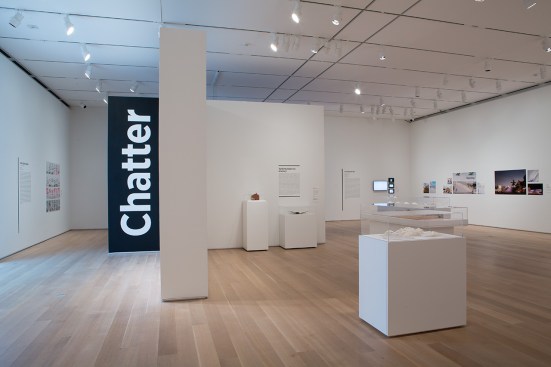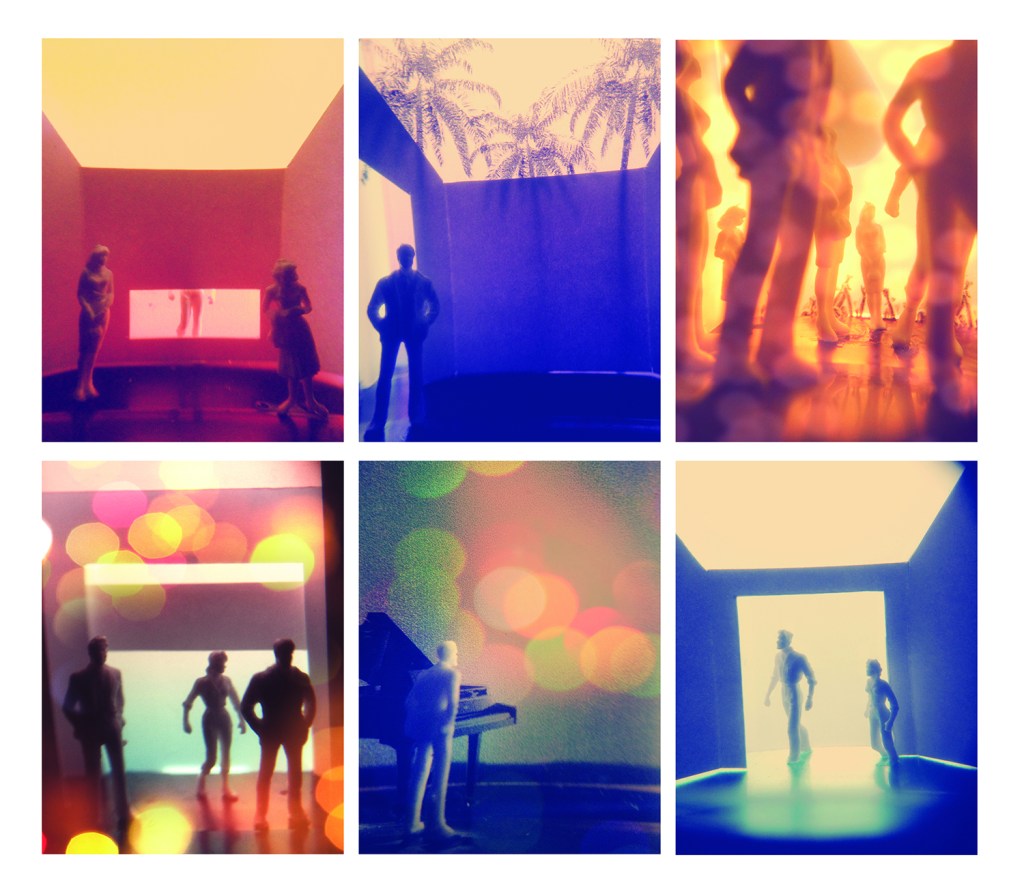“The world is full of
architecture, more or less interesting; we do not wish to add any more … Don’t
ask us for new stuff, we copy.”
Cristina Goberna’s and Urtzl Grau’s (a.k.a. Fake Industries Architectural Agonism) fighting
words could be the motto of Chatter: Architecture Talks Back, the exhibition
of drawings,
models, and videos that Karen Kice curated for the Art Institute of Chicago. What is most remarkable about this exhibition is that it manages to
find a lot of material to show in what already exists, both in terms of reused
images and forms, and in terms of its Postmodernist adherence to reworking
precedent as the main task of architecture.
It is not always easy going trying to figure out all that
chatter. Deciding what to make of Erin Besler’s calligraphy—which is actually the result of having computers trace the solid
and void parts of Peter Eisenman’s House VI drawings at such a slow speed that
they waver and quaver—requires either a deep knowledge of the last half-century of architecture history or a willingness to accept these abstractions
at face value as annotations that have acquired their own beauty. Searching in
“Where’s Waldo” mode through Jimenez Lai’s take on Dante’s Divine Comedy will test your knowledge of the work of Frank
Gehry, FAIA, Bernard Tschumi, FAIA, and Stanley Tigerman, FAIA (not to mention Le Corbusier); make you
wonder why Tigerman’s work is paradisiacal; and leave you lost in fragments.
There are a few proposals for “real” buildings, but they belong
to the background noise of drawings Kice, the curator, drew from the Art Institute’s
collection. It is always a joy to see something from Archigram or Robert
Venturi, FAIA, but they seem out of place. That is because the featured architecture
rejects so much of building practice. Formlessfinder (Garrett Ricciardi and Julian Rose) claim that
the search for form has “always served to limit and control” architecture, and
so they seek its opposite. Ironically, they come the closest of all
participants to presenting something that, at least for a few days, existed in
three dimensions, had structure, and was inhabitable: A pile of shifting sand
that acted as the entrance pavilion to Design Miami in December 2013.
The only project to truly escape from the arcane and the
referential is John Szot’s Architecture and the
Unspeakable, a video that, in slick pans, sails, and jumps, moves from an
advertisement for a Tokyo residential tower to graffiti the architect elicited
in New York to the removal of a wall in a Detroit factory building that leads
to the space’s reuse as what looks like a combination night club and creative industry
hub. Even this piece of communication is meant as a reference, rather than a
depiction, making us aware, for instance, of the absurdity of real estate
promotional videos.
“What am I to make of this?” was the question my friend Sandra asked
after strolling through the gallery. “Am I supposed to think this is good
architecture?” she asked.
“Well, no,” I tried to explain. “This is an exhibition of work that makes us understand that all architecture is a form of reuse, whether of materials or of historic forms. It brings back the Postmodernist notion that design is a re-writing. In the best of these images and forms, you can find the essence of architecture that is about building, rather than being building itself.”
Sandra did not look convinced. Would she be more convinced by Kice’s conclusion in the exhibition catalog?
“This expanded landscape of production and communication is testimony to the
pluralism that dominates the field today, with strong references to antecedents
and disciplinary contexts. The work of this generation can be read as a form of
creative and productive chatter.”

Courtesy The Art Institute of Chicago
Exhibition view at the Art Institute of Chicago.
If chatter is the opposite of that tired notion of discourse,
acknowledging the surfeit of information around us that creates a sense of
chaotic creativity through a thoughtful sampling, I will buy that. Too often,
however, the work at hand here remains a collection of quotes, one-liners, and
parodies. It is time for some serious archaeology and collage.
Chatter: Architecture Talks Back, at the Art Institute of Chicago, runs through July 12.
This post has been updated. Karen Kice is the Neville Bryan assistant curator in the department of architecture and design at the Art Institute of Chicago. The exhibition also includes an installation by Iker Gil, founder and publisher of MAS Context, in the Art Institute’s Gallery 283, which explores the media through which architecture communicates, and features works by Ecosistema Urbano; over,under and pinkcomma, Mimi Zeiger and Neil Donnelly with the SVArts Design Writing and Research Summer Intensive; Koldo Lus Arana, a.k.a. Klaus; Project_ with Sarah Hirschman; 300.000km/s with Àrea Metropolitana de Barcelona; Luis Urculo; and Christopher Baker.
